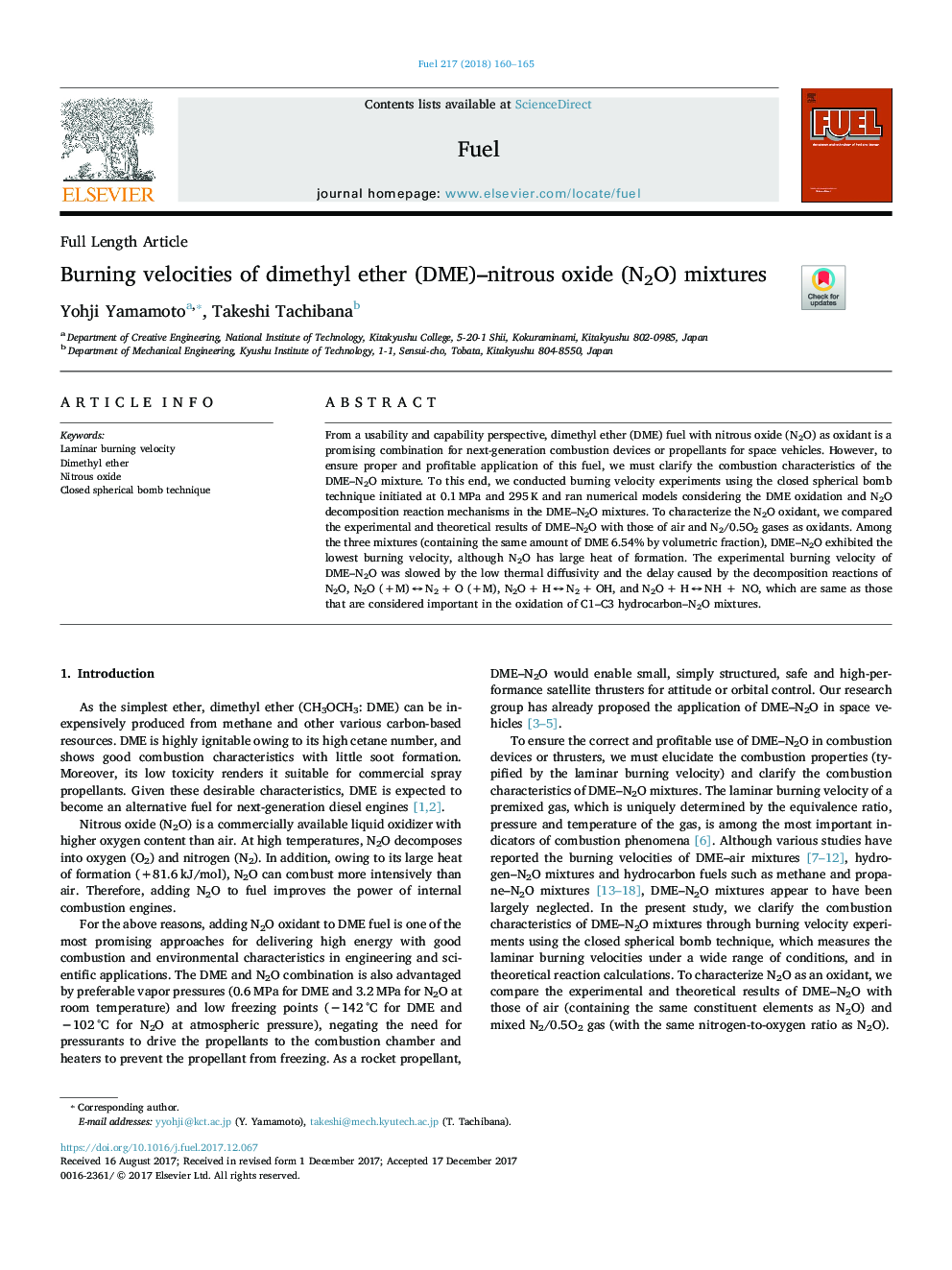| Article ID | Journal | Published Year | Pages | File Type |
|---|---|---|---|---|
| 6631999 | Fuel | 2018 | 6 Pages |
Abstract
From a usability and capability perspective, dimethyl ether (DME) fuel with nitrous oxide (N2O) as oxidant is a promising combination for next-generation combustion devices or propellants for space vehicles. However, to ensure proper and profitable application of this fuel, we must clarify the combustion characteristics of the DME-N2O mixture. To this end, we conducted burning velocity experiments using the closed spherical bomb technique initiated at 0.1â¯MPa and 295â¯K and ran numerical models considering the DME oxidation and N2O decomposition reaction mechanisms in the DME-N2O mixtures. To characterize the N2O oxidant, we compared the experimental and theoretical results of DME-N2O with those of air and N2/0.5O2 gases as oxidants. Among the three mixtures (containing the same amount of DME 6.54% by volumetric fraction), DME-N2O exhibited the lowest burning velocity, although N2O has large heat of formation. The experimental burning velocity of DME-N2O was slowed by the low thermal diffusivity and the delay caused by the decomposition reactions of N2O, N2O (+M)â¯ââ¯N2â¯+â¯O (+M), N2Oâ¯+â¯Hâ¯ââ¯N2â¯+â¯OH, and N2Oâ¯+â¯Hâ¯ââ¯NHâ¯â¯+â¯â¯NO, which are same as those that are considered important in the oxidation of C1-C3 hydrocarbon-N2O mixtures.
Related Topics
Physical Sciences and Engineering
Chemical Engineering
Chemical Engineering (General)
Authors
Yohji Yamamoto, Takeshi Tachibana,
